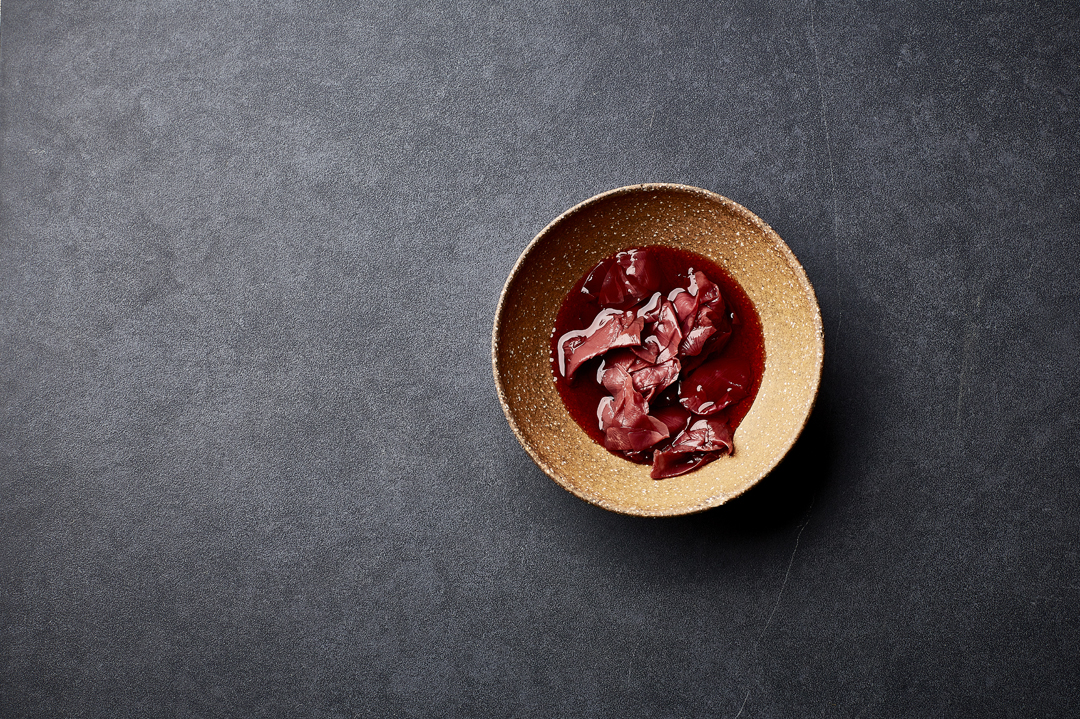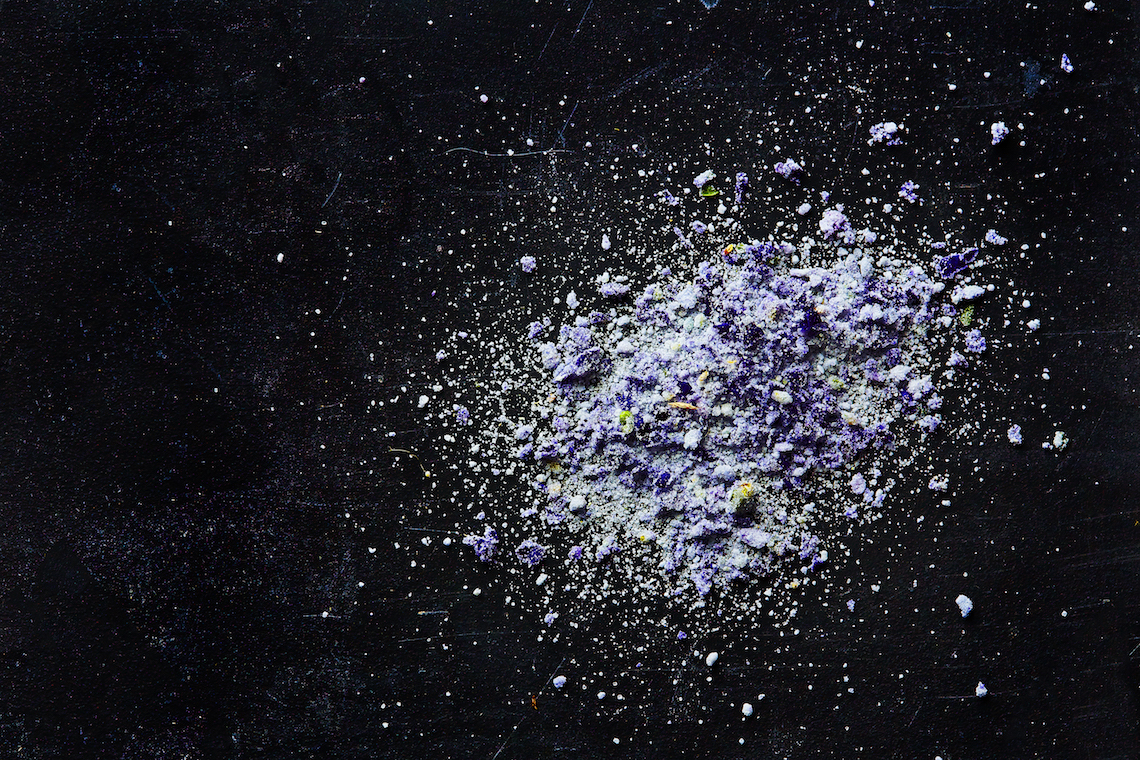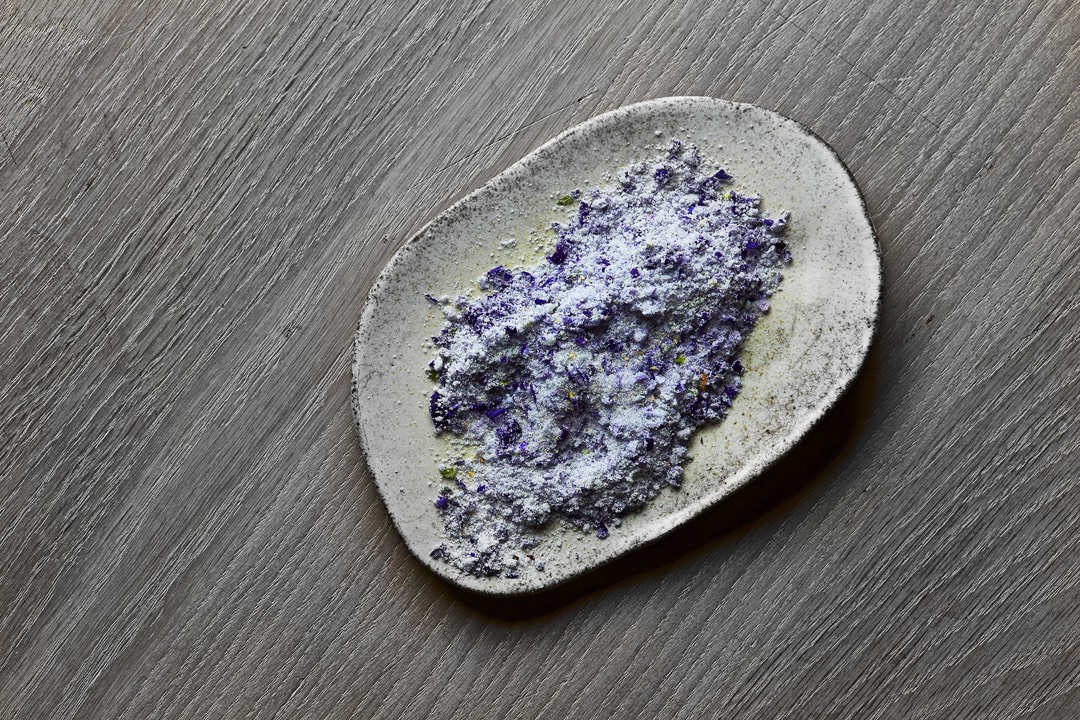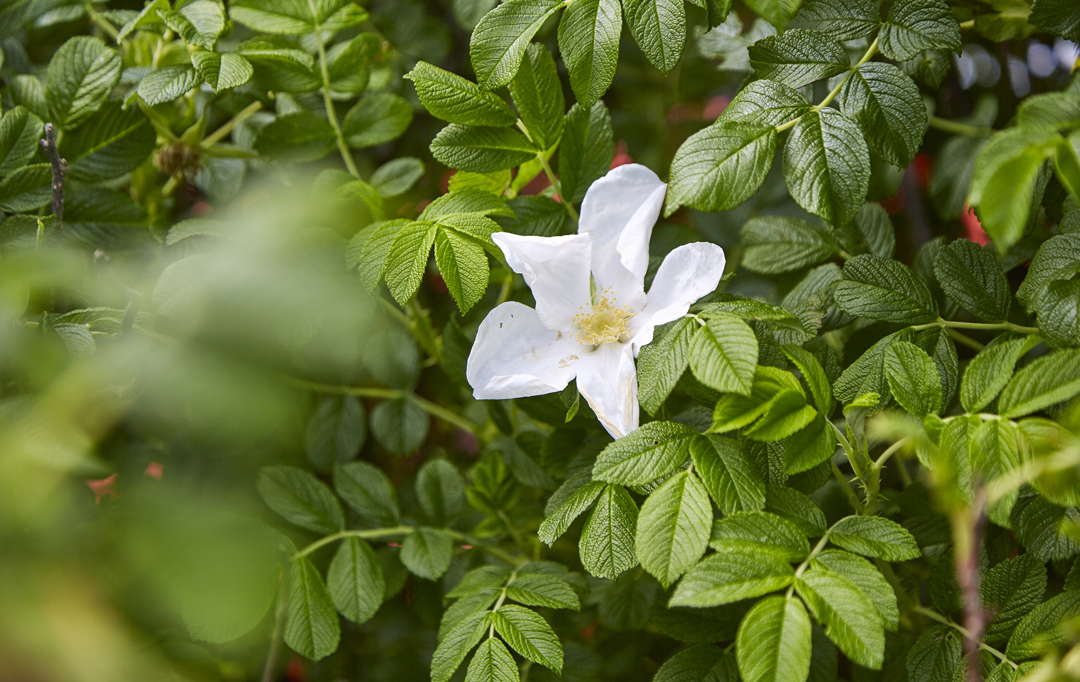
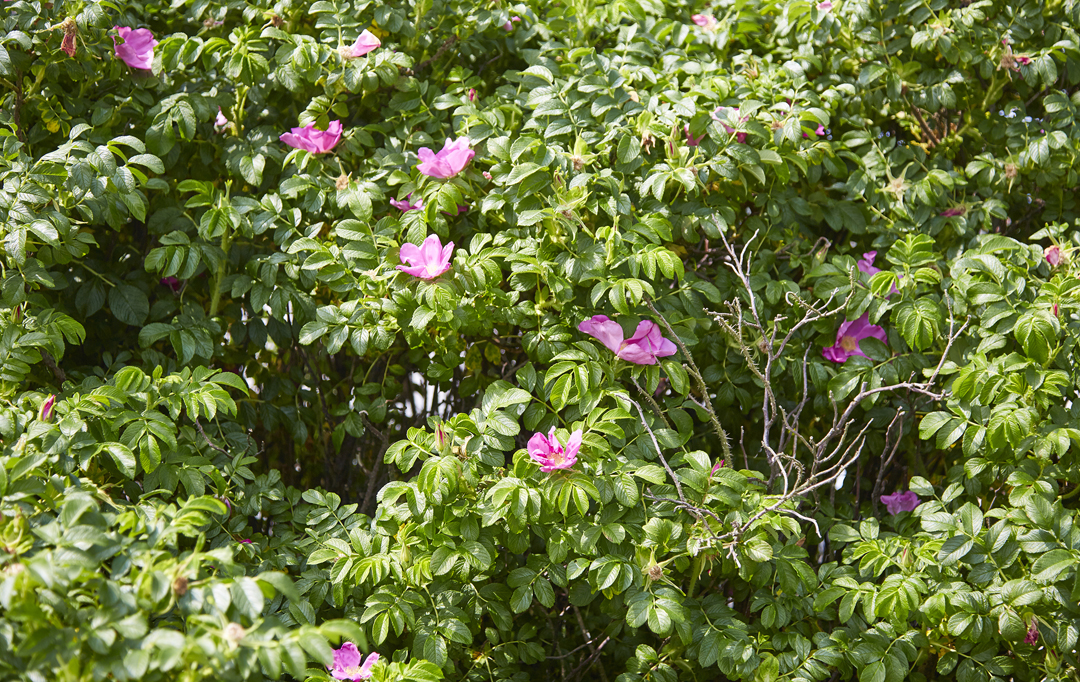
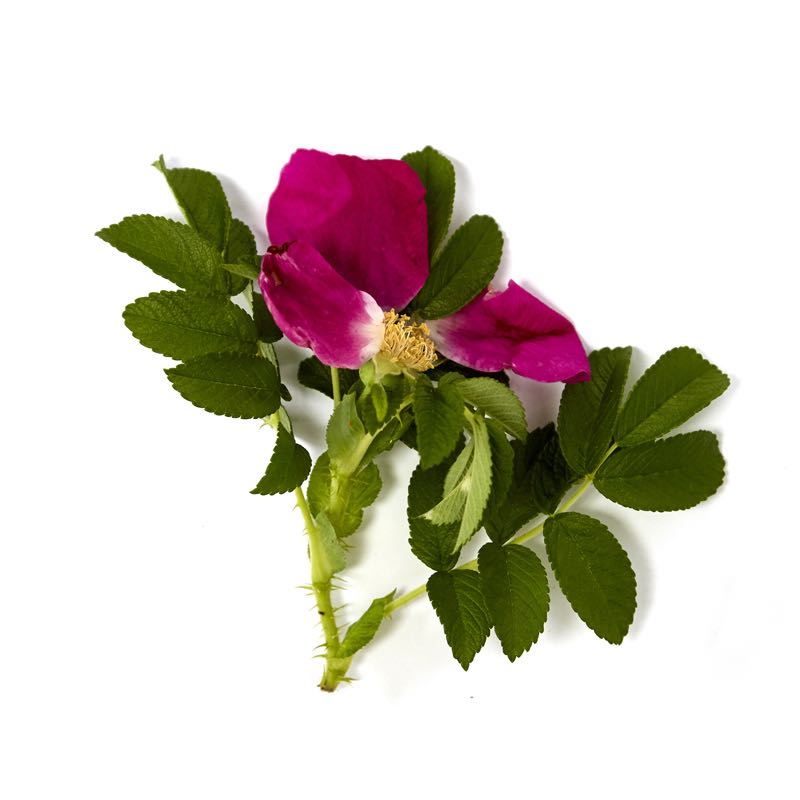
Rose hip
Rosehip is actually a collective name for 10 different varieties of wild roses with edible fruit and flowers. Some species of rosehips are invasive and spread aggressively (they're on the government's list of plants that need to be controlled!), but you won't regret letting them spread to your kitchen counter.
-
Where to Find It
Rosehip bushes are very common in holiday home areas, where they've been planted as windbreaks since the 1950s. The poor soil conditions were never a problem for the rosehip plant, which spread fiercely in the following decades into the surrounding landscapes, where it gained a foothold on the edge of woods and along roads. Rosehips need sunlight, but are otherwise hardy—they can withstand salty, dry conditions, severe frost, and wind. Their resilience enables them to thrive in many areas, like sand dunes and around the edges of the beach.
Salt marshes, beaches, towns.
-
When to Find it
You can harvest the flower petals in June and July, and gather ripe rosehip fruit from July, though the latter may very well hang on the bush well into October. A little overnight frost won't hurt them, but as the season progresses, the greater the risk that rosehips will be attacked by worms.
Flowers: June, July. -
How to Spot It
Rosehip is a bush that grows up to a meter and a half tall with wrinkled, dark green leaves and short, brown thorns. In summer, it blooms with yellow, pink, or rose-colored petals and has a strong rose scent. When it wilts, it will leave behind large, berry-like fruits measuring six to ten centimeters in diameter. Depending on the variety, the fruits will either be round or ovoid. Most often they're red or orange, but can also be a deep chestnut color or solid brownish-black.
-
How to Pick It
You can easily pick the flower petals from the rosehip bush, but be careful not to damage the fruiting bodies. Gently twist the fruits off of the bush or snip them off with a pair of scissors.
Unripe fruits: July, August.
Ripe fruits: July, August, September, October.
Risk of misidentifying the plant
It can be difficult to tell the difference between various types of wild roses, but there's no risk of confusing them with something toxic. The most common rosehip in Denmark is called rosa rugosa. Its fruit is round, while the dog rose's, for example, are more oblong. A third type of rosehip is the burnet rose, which has tiny, brownish-black fruit. All three behave more or less the same when cooked.


